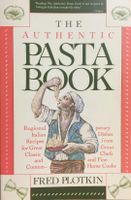Advertisement
Cappelletti and Tortellini
By Fred Plotkin
Published 1989
The names mean “little hats” and “little tortelli” (similar to folded anolini). They were eaten by Bolognese university students in the Middle Ages, but people seem to think of modern tortellini as food from the Renaissance. The distinctive shape of these pastas is part of their charm. They can be taken as little hats, but I like the classic explanation more. Tortellini are traditionally eaten at Christmas dinner in Bologna, whose citizens would bring the freshly made pasta to their priests. My sacred Bolognese friends say the design was created by the church. My profane Bolognese friends disagree. The prevailing story is that a seventeenth-century Bolognese cook fell hopelessly in love with his master’s wife. He once caught sight of her in the nude but could not act upon his desires. Instead, he rushed to the kitchen where he fashioned a pasta ripiena in the shape of the woman’s navel. The following day he served 2 plates of these to his master and mistress who were each, in different ways, delighted, and the 3 lived happily ever after. A slightly different version of this story holds that tortellini were modelled after the navel of Venus, the goddess of love who has considerable influence in Bologna.

